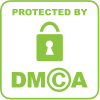If you’re studying abroad, especially if any element of your course is online, getting your notes right from calls with your tutor, be those seminars or one-to-one tutorials, is essential.
Pen and paper was the preferred method of taking notes for years, obviously before computers were even invented. But unless you’re skilled in the ancient art of shorthand, the chances are that keeping up using those old methods is going to mean losing a lot of detail about what was discussed in an online tutoring session.
It’s true that early transcription and dictation software had their glitches, especially those allied to word processing packages, which took weeks and even months to learn an individual user’s voice. Even then they made so many mistakes it was almost as quick to retype all the passages manually. Obviously, people with accessibility issues and visual impairment have a greater need for dictation software, and fortunately, things are changing fast with the advent of artificial intelligence (AI), meaning that transcription services don’t necessarily have to be outsourced.
Outsourcing transcription to third parties
Large organizations often have contracts with third-party companies to perform transcription and translation services. These service providers tend to be based in areas of the world where wages are low, so that AI machine learning performs the original transcription, and the output is checked and edited or ‘polished’ by a human operator. One of the major advantages for companies in different time zones to these countries is that they can send a video or audio recording to be transcribed at the close of business, and the textual content be delivered to their email inbox first thing the next morning.
Other companies and indeed individual students can also access transcription software themselves via the cloud using an appropriate Software as a Service (SaaS) platform. These platforms often offer many extra services, too, which we can look at briefly here.
Beyond transcription
What’s more exciting than just getting your meeting content transcribed is the way that Natural Language Processing (NLP) can be allied with Natural language Generation (NLG) and Natural Language Understanding (NLU) via AI to allow machines to perform a variety of complex tasks with textual information, after it has been transcribed from audio and/or video.
One example of this is the meeting transcription service fireflies.ai – which offers a summarized precis of any meeting that was recorded. Text and voice together allow the user to go through a meeting or tutorial transcript and pinpoint salient sections of the transcribed text, but the beauty of their service is a summarized few paragraphs in a separate section of the user dashboard displaying much like: “…he said X, she said Y, so they concluded that the best way forward was Z”.
Students studying abroad might also take advantage of AI-driven translation into other languages, then avail themselves of the summarization, categorization, and Q&A generation facilities that many such SaaS providers offer. The Q&A generator is especially useful and there are dozens of such ‘Flash Card’ producers on the internet. Students only have to upload their transcribed text from a tutorial, and within minutes they can be testing themselves on the content that they just sat through.
Institutions providing access to transcription software.
Whilst some educational institutions do offer access to licensed software as part of their services to students, others allow their students to access a discount on several of the more established transcription SaaS providers. But smart students who do their research can combine the ‘free’ entry-level packages offered by platforms like Otter.ai, Fathom, and Grain.
These learners can cherry-pick the best ‘freemium’ platforms available on the web and use them in conjunction with each other to access the transcription and more advanced facilities on offer. When all this output is used in conjunction with a free flashcard generator, it puts the student in a strong position without the need to spend money that could be better used purchasing cold Canadian beer and pizza. It’s important to get one’s priorities right, after all!
Plagiarism lurks in every corner of the internet.
On a closing note, the other important issue to consider is that although transcription of seminars and tutorials is a valuable tool, simply taking the conversation you had with a tutor, using a software platform to transcribe it, and copy-pasting it into your ‘essay’ isn’t clever – firstly you won’t learn anything and secondly plagiarism software will almost certainly find you out, especially if another person in the same meeting does likewise!
Conclusion: Transcription Services
Remember, tutors give their wisdom as the basis for a student to perform their own research and draw conclusions from that, together with their intellectual perspective. Transcription and the use of AI aren’t a substitute for learning; it’s just another tool to make the process less tedious so you can spend more time fact-finding and hypothesizing—definitely not so that students can spend those saved hours drinking cold beer while munching down that pizza! Not that you’d ever do that, of course.


